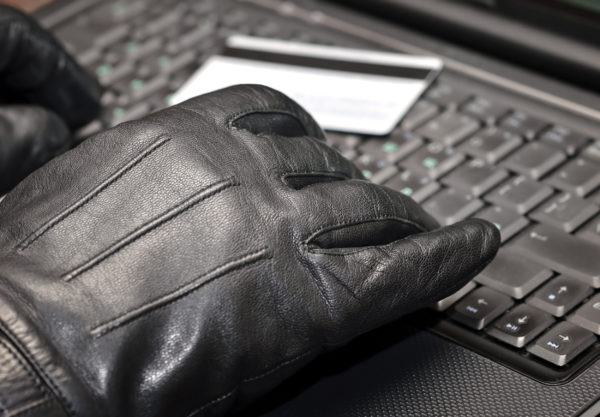th
century, when plastic currency triumphed. Paradoxically, however, each technical improvement that makes credit cards safer and more comfortable to use has brought the day when these plastic cards become the fascination of a select group of weirdoes ever closer. That day won’t come in 2019 and not even in 2020, but it’s closer than we think.
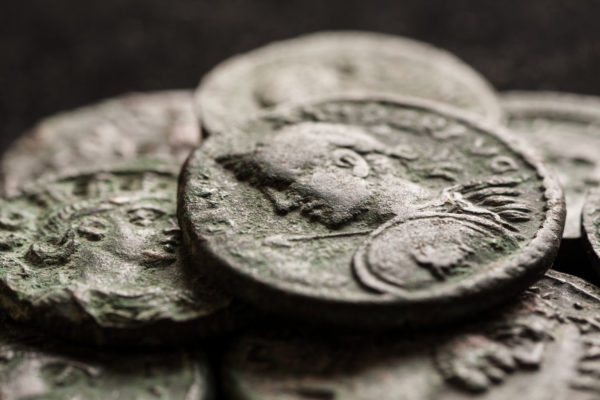
Credit cards have always offered something that cash doesn’t – the card is light, thin and small. And it only takes some crude oil and a tiny bit of gold to manufacture, making it a relatively cheap item to produce. Plus for just a small fee, the cardholder can delay the payment date.
The Predecessors of the Credit Card Are Ancient
The credit card, which was a symbol of the good life in the 1950s, did not appear in a vacuum. Shops had begun issuing charge plates and celluloid coins in the United States already in the 19th
century; gas stations soon followed suit. This allowed local farmers to buy goods from the shop “on a loan”. The farmers would repay the loan once they sold their crop or cattle in autumn. But it wasn’t only the farmers who used the charge plates and celluloid coins – city folk did so too. It does feel great to buy something now and pay later, doesn’t it?
Department stores adopted similar cards at the start of the 20
th
century. Granted, the cards’ drawback was that they could only be used in the gas station or store chain that had issued them.
The credit card had two other important predecessors that greatly expanded people’s understanding of money. The U.S. Postal Service adopted the money order system in 1863. The courier company American Express began competing with the national mail service’s money orders in 1882. The service primarily gained popularity among immigrants who would wire money back to their former homeland. The service was also popular for paying gas and electricity bills.
Seeing how popular the money order system was, American Express developed a product that would allow converting US dollars to the local currency in another country with ease. The new product was called a traveller’s cheque and made travelling much more comfortable and safer than with cash. The cheques also had security features – a signature and a watermark.
The banks, too, saw financing credit purchases as a lucrative endeavour. The first bank issued credit card was the Charg-It card adopted by Brooklyn banker John Biggins in New York in 1946. Biggins’ bank served as the middleman between the buyer and seller, compensating the purchase to the seller and getting the money back from the buyer with an interest at a later date. The system was local and only available to the bank’s customers.
The first credit card to spread widely was the Diners Club Card that was first issued in 1950. The story began a year earlier when Frank McNamara went dining at Major’s Cabin Grill in New York but forgot his wallet. He couldn’t leave the restaurant before his wife drove all the way from their home in a suburb to Manhattan to save him. To avoid such embarrassing situations in the future, McNamara decided to establish the Diners Club Card system. He explained his plans to his lawyer Ralph Schneider, who eagerly joined forces with McNamara and made the plans a reality. The Diners card allowed its holder to peacefully dine at restaurants and travel for a month and then just pay the bill at the end of the month.Some historians claim that McNamara’s story is made up. But so what if it is? It’s quite adorable to imagine McNamara’s wife rushing through New York at night to save her husband. The fact is that the Diners Club Card came, saw and conquered! At the beginning, there were twenty-seven restaurants in the system and two hundred friends and family who had paid a three-dollar annual fee. By 1951, the Diners Club Card had 40,000 users. When the Diners Club Card entered the travel business, the number of members reached a million in 1959 and Diners was listed on the stock market.
Here it is important to differentiate between a charge card, i.e. a card that requires the holder to pay the sum spent during a month back by a specific due date the following month, and a credit card, i.e. a card that allows the holder to pay back the spent sum whenever they choose, but the holder is required to pay interest on the sum that they’ve yet to pay back.
BankAmeriCard: The First “Card of the People” to Fall to Its Demise
Bank of America wasn’t the first to begin issuing credit cards, but they did get the most attention. BankAmeriCard was established in 1958 as a relatively grand social and economic experiment. The bankers asked themselves, why should people have to pay off the card balance immediately on thefirst day of the following month? They shouldn’t have to, right? It’s better if they pay interest on the balance to the bank! Everything seemed perfect – the customers get access to a microloan market with an open payment due date and the bank earns a bunch on interest.
Since no similar cards had existed before, people didn’t know to ask for one. So it happened that on one fine day, 60,000 residents of the town of Fresno found that a credit card had landed in their mailbox. This was the first credit card not intended for the wealthy and well off but for the average American.
What the bankers hadn’t thought about was how many of those 60,000 people were actually creditworthy. Many rushed to the shops and restaurants and spent the credit without thinking twice. Then they either weren’t able to or couldn’t be bothered to pay off the balance. The result? The bank suffered massive losses and the project manager was fired.
According to Joe Nocera and his book
A Peace of the Action
, the project, including its direct and indirect expenses caused the bank to suffer nearly a twenty million dollar loss (in the current currency, this number should be multiplied by about seven). The media chimed in claiming that the people had been offered something they hadn’t asked for. Even the local church minister scolded the bankers for the irresponsible stunt.
The bank drew some harsh conclusions. The existing members of the team were transferred to other positions to keep them from ever coming into contact with credit cards again. Departments were created to deal with fraud and collect debts. The cards of those that refused to pay off their balances were revoked and the stores that were thought to be acting fraudulently were excluded from the programme. Loan specialists took over managing the project.
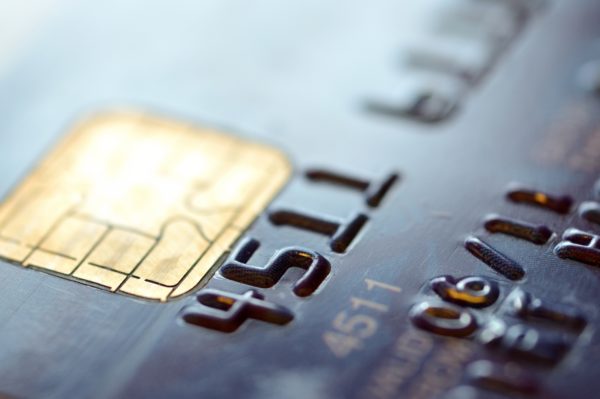
Looking back, they obviously made the right decision. The bank managed to turn the project profitable by 1961. By 1966, the card had spread across the US, becoming the first credit card that allowed the holder to pay for very different products and services. We know this card well – since 1976, it bears the name VISA.
An equally famous credit card, the American Express, was first issued in 1958. The first cards were printed on paper, but the swap to plastic was made a year later. The material was not only more durable than paper but allowed adopting a far quicker method for processing payments; the card number was pressed into the payment document using the ZipZap press. By 1964, a million American Express cards were being used the world over.
In 1971, American Express implemented another important innovation – the magnetic strip on the back of the card. The strip had been invented a couple years prior by an engineer at IBM and made it possible to use a new generation of card terminals that significantly improved the speed of processing payments at sales points (the time required to send data from the terminal to the company’s authentication centre and receive a reply was around five seconds) and was much safer.
The third big name on the credit card market, MasterCard, was created in 1966 as a joint effort of several Californian banks. The first plastic card was adopted in the UK by Barclay Bank in 1966 and was based on the card issued by the Bank of America.
The debit card was not adopted until the 1980s and was country-specific for a long time. The option of using a debit card to pay for purchases in other countries or online began to become more widespread starting from the year 2000 onward.
What Does the Number on a Card Tell You?
The most widespread credit card companies in the world, VISA and MasterCard, use a sixteen-digit card number, American Express uses a fifteen-digit one. Some credit cards even have a nineteen-digit number. These numbers are anything but random. They reveal a lot to he who knows what to look for. The first unified standard for numbering credit cards was issued by the International Organization for Standardization in 1989. The standard helped identify the industry, the issuer of the card and the cardholder.
The first number, i.e. MII or the Major Industry Identifier, indicates the industry the issuer of the credit card is active in.
For example:
1 and 2 – aviation companies
3 – travel and entertainment industry
4 and 5 – banks and financial institutions
6 – trade and financial institutions
7 – crude oil industry
8 – healthcare and telecommunications
9 – national cards (followed by a three-digit country code)
The first six digits on the card (incl. the MII) identify the organisation that issued the card and are collectively called the
Issuer Identification Number (IIN). Although the list isn’t public, Wikipedia claims that the MII on an American Express card is followed by 34**** and 37****, and by 4***** on a VISA card.
The numbers starting from the seventh number on the card up to the penultimate number identify the customer. The last number is a control based on an algorithm patented by former IBM employee Hans Luhn in 1954 that helps identify possible random errors in numbering.
The Bank Cheque: Soon To Be A Mere Memory
The cheque or check is a financial document that requires a financial institution to pay the sum indicated on the cheque from the account of a person or organisation to the person or organisation indicated on the cheque. There are various types of cheques: a registered check (registered to a specific person), bearer cheque or traveller’s cheque (the issuer of the cheque grants the holder of the cheque the option of redeeming the cheque in the bank of a foreign country in the local currency).
Not much is known about how cheques came to be historically. The clay tablets of Mesopotamia, the bonds of Rome or the Persian bank bonds from the 3
rd
century AD called
tchak
(the term soon became the more palatable
sakk
in Arabian countries) are the predecessor of the modern bank cheque in one way or another.
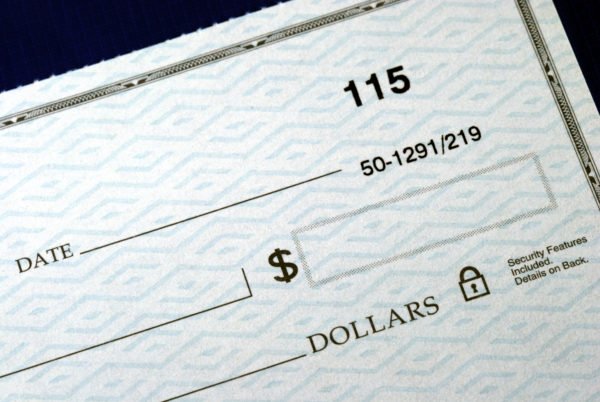
Cheques were used in the 13
th
century by Venetian merchants and became widespread in the Netherlands in 1500. Trade bloomed and so much money accumulated in the country that people no longer dared keep it at home. It was safer to take it to the cashiers, who, in essence, served as banks. The cashiers charged a fee for putting the money in a savings account and issued a cheque that allowed the holder to reclaim the money at a later time. From the Netherlands, cheques spread to Great Britain and elsewhere in Europe.
Some historians believe that the cheque economy was, instead, established by the Knights Templar, which was founded in 1120. Although several facts in this story can be disputed, it is believed that the Knights Templar established contemporary banking. We primarily know the Templars as warrior monks, but their power spread much further and they were also skilled bankers.
The Templars kept order in Jerusalem and would often leave their fortunes in a church in London before embarking on the long trip. The knights didn’t want to take on the journey with carts full of money – that would have made them easy prey for thieves. This is why the Grand Masters came up with a system where a knight would pay a sum to the church in London and was handed a cheque (ledger) in return that would allow him to withdraw the money in Jerusalem. It’s likely that the cheques were already cipher encrypted back then.
Granted, similar replacement systems for money had existed before, e.g. in China, albeit on a national level. The system used by the Templar was, in essence, based on private capital. Although the church and applying interest were officially mutually exclusive, the Templars found a way to develop banking under the guise of the church (by calling the interest rent, etc.).
The Knights Templar even facilitated some major transactions – for example, when king Henry III of England bought the second largest island near the coast of France, Oleron Island, the order confirmed that the king had paid 1,000 pounds for the island during a five-year period.
When the order’s last stronghold in the Holy Land fell in 1291, the Knights Templar had to relocate to France. They continued only as bankers and their biggest debtor was the king of France. The debts were among the reasons why king Philip the Fair had the Templars and the properties of the order arrested. Another reason was the order’s intention to found their own monastic state. And thus one of the greatest financial powers of the time came to an abrupt end.
The contemporary cheque economy began its quick ascent at the end of the 1770s. Cheques from the era were printed on a form and filled in in part by hand.
At first, the system was relatively clumsy. The question was, how could one bank get money from another? To do so, a messenger had to be sent to the other bank. But that cost both time and money. Legend tells us that the messenger of a bank once entered a coffee shop for some rest and met the messenger from another bank. They realised that to avoid both of them walking all the way to the other bank, they should exchange the cheques right there. This led to the birth of the clearinghouse system – a network that allows banks to exchange cheques. This system is still used today.
The chequebook became commonplace in the mid-19
th
century. Banks cooperated to make the use of cheques comfortable and safe internationally. For example, the stub of the cheque was retained in the chequebook as a record of the cheque.
However, it would be another century for the next great technological breakthrough. The machine-readable MICR character standard was adopted in the US in 1959 and allowed banks to process cheques significantly faster.
Despite the fact that credit cards began spreading across the globe in the 1950s, cheques were still the most popular non-cash method of payment in the world in the early 1990s. This was, however, the historical peak and the use of cheques has been on a gradual decline ever since. The pan-European Eurocheque system was phased out in 2002 and is considered to have been succeeded by the Maestro bank card system.Cheques continue to be popular in the US, Canada, UK, Ireland and France but have either fallen completely out of use or play a marginal role in many countries (e.g. in Northern Europe and the Baltic States, Germany, Austria). Verifying and clearing cheques takes a lot of time compared to new electronic methods (it’s common to have to wait weeks for your money after cashing in a cheque) and the service is rather expensive for all concerned parties.
When discussing cheques, we have to also mention the most ingenious cheque forger of all time, Frank Abagnale, who was active in the 1960s. He committed his first con at the age of 15 and became a master of the trade. He didn’t only take great care in forging cheque numbers but had thought of every smallest detail in the process. The fact that it takes some time to clear a cheque allowed him to remain in one region for longer periods. He tended to wear a pilot’s uniform to seem more convincing when cashing in cheques.
Check Fraud Working Group estimates that the annual damage caused by cheque forgeries during the golden age of cheques in the mid-1990s reached around one billion dollars.
Online Payments and PayPal
In 2018 it seems weird to think that there was a time when you had to go to a bank branch to know your account balance, make a bank transfer or take on a microloan. Now all of this can be done via a computer or smartphone. The first solution resembling online banking services was created in 1981. A year before, four New York banks – Citybank, Chase Manhattan, Chemical Bank and Manufacturers of Hanover – created the Home Banking solution in an effort to be more available to their customers. Granted, the Videotex system they used was pretty basic and slow, but the online banking system did allow the customer to conduct bank transactions with the help of a phone’s keypad.
The Bank of Scotland launched their online banking system, Homelink, in 1983. The customer could contact the bank via their TV or phone and could pay bills or transfer money.
The development of online shopping made online payments a necessity and retail giants like America Online, Amazon.com and eBay further promoted the development of online banking.
If we consider 1981 the birth of online banking, then it took at least a quarter of a century for it to become mainstream! In 2010, about half of all adults in America and a little under a half of all adults in the UK used online banking services.However, the popularity of online shopping created demand for a payment network that all major auction and online shopping sites accepted. Enter eBay, the owner of one of the world’s largest online payment systems, PayPal.
PayPal was founded in 1998 and started out as antivirus software that had a money transfer service. In 2000, its creators Pieter Thiel and Max Levchin decided to merge with online banking company X.com owned by Elon Musk. PayPal was acquired by eBay in 2003 and became the auction site’s primary payment method.
PayPal is so brilliant because the buyer and seller never see each other’s bank accounts. PayPal arranges the money transfer and keeps the bank account/credit card number to itself. The customer can keep the money they received for the sold items on their PayPal account and use it for purchases on eBay. Today PayPal has over 220 million accounts from 190 countries and is the most common online payment method.
Credit Card Terminals: From the ZipZap to Contactless Terminals
A payment terminal, also referred to as a point-of-sale or POS terminal or credit card terminal, allows transferring money electronically and reads the information on the credit or debit card. Contemporary devices also support contactless NFC-based transactions.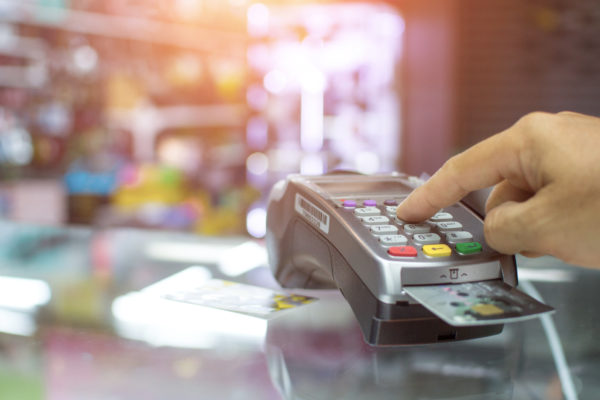
The creators of payment terminals have historically had two tasks – to make the process of reading data automatically as quick as possible and to guarantee the safety of the transaction.
Before credit card terminals were adopted, stores would use mechanical credit card machines (known as ZipZap machines). It was used to press the number and cardholder’s name embossed on the card onto a special form. A copy of the form would be delivered to the bank for processing. The process was time-consuming and clumsy.
A magnetic strip was added to credit cards in 1979 and VISA adopted an electronic POS system that same year. These developments led to the creation of special credit card terminals that skyrocketed a small tech company from Hawaii, Verifone, to fame. The company’s ZON-terminal became so popular that it set the bar for all credit card terminals. Ingenico, that created its first terminal in 1984, became the second global name.
Credit card terminals have developed in tune with credit cards. Criminals realized that the information on the card’s magnetic strip was easy to read and write and began cloning credit cards.
To combat this, three credit card companies, Europay, MasterCard and VISA, created a common EMV standard, i.e. chip cards that raised security to new levels. Before, a shopkeeper’s only security was to compare the customer’s signature on the receipt to the signature on the card, now the PIN code and a cryptographic algorithm came to the rescue.
The contactless NFC (near-field communication) card entered use in the early 2000s. All of the information is recorded on the card’s chip and is transferred to the terminal using an antenna. Devices equipped with this technology (e.g. plastic cards and smartphones) can be used both as payment devices and a means of identification and entry.
NFC works between:
- Two NFC-enabled devices;
- A device and NFC tag (often a sticker with a small microchip);
- A device and payment terminal.
The NFC standard has several significant advantages, e.g. it has an incredibly short 0.1-second pairing time, which is 60 times less than it takes two Bluetooth devices to pair.
Unlike a QR-code, NFC enables secure connectivity and can encrypt data. Furthermore, it is always ready, meaning that there’s no need to turn on a code reading app on your smartphone. It’s quick, safe and comfortable.
Credit card companies are happy with these developments – contactless cards reduce the proportion of cash payments, especially for small purchases, and recent years have shown that people have happily accepted contactless payments.
Sadly, the triumph of this microchip indicates the end of the credit card era.
The Triumph of the Smart Wallet
Since NFC isn’t cloud technology but has to be physically present in the phone, it has pushed smartphone manufacturers (and of course Google) to the forefront. We always have our phone on hand and it is incredibly comfortable! All you have to do to pay for your purchase at a shop or restaurant is to place your smartphone near the card terminal just like you would a contactless card.Nokia built the world’s first NFC-enabled phone in 2006; the first Android OS phone, the Samsung Nexus S, entered the market in 2010. This means that your phone is the only thing you need to bring along – it replaces your bankcard, ID card and public transport tickets.
Last summer, the analysis specialists at Juniper Research predicted that the percentage of contactless mobile payments is on a significant rise and should quintuple in the next few years. Visa Europe recently predicted that by 2020, every fifth European will be using mobile payments.

Apple Pay, Samsung Pay, Google Pay
Interestingly enough, Google and Google Wallet are not on the top of the market; instead it’s Apple and Apple Pay. According to Juniper Research, Apple Pay dominates the contactless mobile payment market – half of all payments are made using their services. Apple Pay is followed by Samsung Pay and Google Pay. Apple has achieved swift success regardless of the fact that it’s been uncharacteristically slow and conservative in the field. The app was launched in 2014 and was only available to American merchants and buyers for a long time. The service is now expanding across the globe but is taking its time - See where Apple Pay is available
.
Apple Pay can be used once you link your bankcard to the app. It’s possible to pay in a physical shop using an iPhone or Apple Watch or online (in Safari) using an iPad, PC/laptop or iPhone.
Apple talked about expanding the use of NFC technology, incl. to open doors and car doors last summer.
Analysts believe that Samsung Pay and Google Pay will also prosper. Apple’s success is attributed to the fact that their customers are heavier users. Android users tend to be more conservative when it comes to new tech.
Google rebranded its digital wallet in January 2018 when it merged Android Pay and Google Wallet into one service that is now called Google Pay or G-Pay. The service can be linked to most credit and debit cards.
Samsung Pay offers similar solutions, however, one of its advantages is the fact that in addition to NFC it also uses MST (i.e. magnetic secure transmission) technology, making it compatible with most card readers.
Speaking of interesting payment methods, a service called the M-Pesa is popular in Kenya. To use the service, the customer deposits their money at a local shop that then sends the money on its way via “mobile waves”. It’s so popular that even the country’s flag airline, Kenya Airways, now accepts M-Pesa payments. A similar service, EKO, is used in India. A customer deposits money to their Bank of India account from a shop or pharmacy for a reasonable fee. So, it may very well be that soon we might see EKO or M-Pesa side-by-side with – or perhaps replacing – Google and Apple as the main mobile payment providers.
Security is Increasing but So Is the Interest of Criminals
All signs point to the fact that we’re moving towards a cashless society. The increasing popularity of contactless cards and mobile payments indicates that comfort overrides the fear of giving up our privacy. It’s no secret, however, that where there’s cash, there’s conmen and when money becomes digital, crime will want in on the action. No doubt, though, that this requires far greater intellect than hijacking an armoured car.Once gold stopped being transported in trains, criminals turned their attention to credit card fraud. Criminals usually access card data in three ways:
- With a skimmer device that copies the PIN code and the data on the card’s magnetic strip;
- Phishing, i.e. a fraudulent attempt to obtain information via email, which usually includes building a website that significantly resembles a trustworthy website that is then used as a lure to get people to disclose their information, e.g. the website might ask you to change your card’s PIN code;
- Malvertising, i.e. using online advertising to spread malware by getting people to click on the ads;
- Occasionally groups manage to hack into the databases of large companies and then reap the spoils.
Examples of Cyber Attacks
In the mid-2000s, a criminal active in Russia and Eastern Europe managed to steal the data of 32,000 credit cards. The data was used to clone the cards, resulting in an estimated 17 million pounds worth of damages in the following years. The complex money laundering system spanned from London to Estonia and Poland.In 2012, an international investigation lead to a group that had hacked into one hundred Australian retail sellers and stolen the data of 30,000 credit cards. The data was used to create forged credit cards and the caused damages reached around 30 million Australian dollars.
Criminals normally use skimming to record credit card data from ATMs by attaching a thin cover on the keypad and a skimming device near the card slot. This allows them to record the PIN code and the card’s data. It’s a dependable but terribly slow method – it only allows copying a couple hundred cards a day. The criminal also has to check the ATM, which increases the risk of getting caught.What a group of criminals did in Target in 2013 was use the scale effect – an employee that was working with the criminals uploaded malware to a computer or coaxed someone to use malvertising. The criminals managed to record the PIN codes and card data of 40 million people in the chain’s stores.
The record holders – considering both the money stolen and the intricacy of the plan – are a gang of eighteen from New York that managed to cause up to 200 million dollars in damages before being tried in 2017. By using forged documents, fake companies and actual operating companies, the group created approximately 7,000 made up identities. These fake people were given great credit histories that allowed them to take on loans from banks and get cards with great credit limits. As you may have guessed, the loans were never repaid.
However, it’s not only criminals that are associated with money-related frauds but also whole countries. War sometimes motivates countries to attempt to undermine the economy of their opposing countries by introducing counterfeit money on the enemy’s territory. For example, Nazi Germany attempted to undermine the British economy by circulating counterfeit pounds. But the national counterfeit money trade also blossoms during peacetime.
David Wolman writes in
The End of Money
that counterfeiting money is a science. Counterfeit one hundred-dollar bills were of such great quality during the final decade of the previous century that the US had to commission a new design for the note in 1996. This truly marked the symbolic end of era as the design had remained unchanged for seventy years. However, the next change came already in 2006, as counterfeiters were keeping up with the developments.
The story associated with the optically variable ink used on the dollar is a good indication of the level of counterfeiting. The ink used in printing the new one hundred-dollar bills in 1996 would change from green to black when viewed at different angles. The special ink was bought from an exclusive Swiss company. However, soon after the transaction, North Korea also bought ink from the same company. The ink they bought changes from green to scarlet depending on the angle. To the untrained eye, this is very similar to the green-to-black combination. It wasn’t long until counterfeit dollars using the green-to-scarlet ink entered circulation.
The economies of other countries are also undermined using more modern means –cyber attacks. The more electronic a country’s financial system, the more tempting of a target it becomes to both criminals and hostile countries.
So, while a cashless economy might seem an incredibly comfortable and affordable alternative at first glance, this is by no means true as the sums required to improve cyber security on the level of each company and country are constantly on the rise.
Cyber security is just as important in securing a financial system as the gold and silver standards once were. It’s good to know that Erply’s home country Estonia ranked first in Europe and fifth in the world in cyber security at the World Summit on the Information Society in Geneva in 2017. So Estonia is not a bad place to set up the world’s virtual pots of gold.
